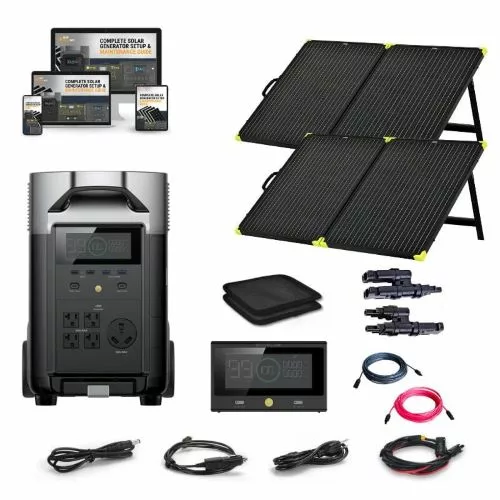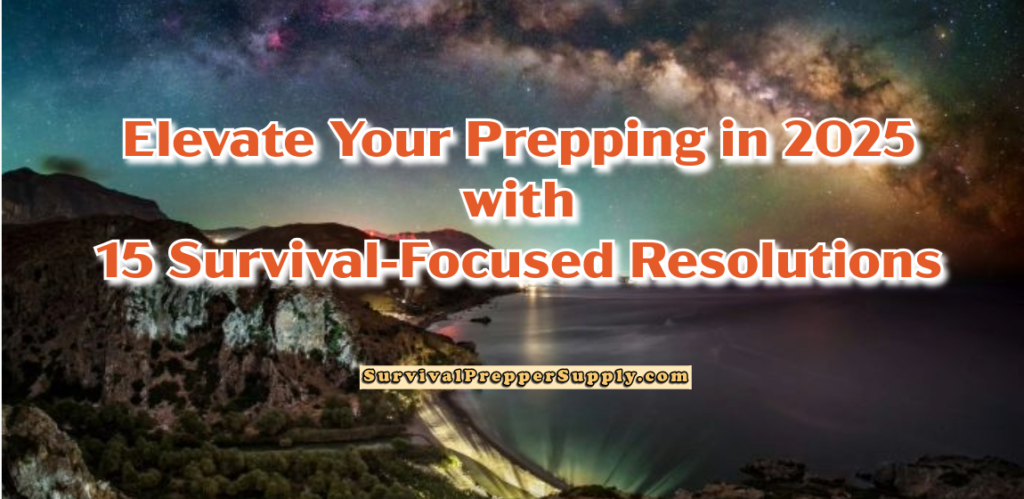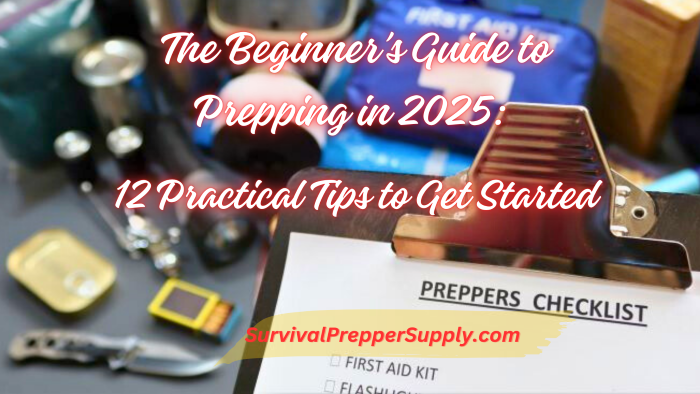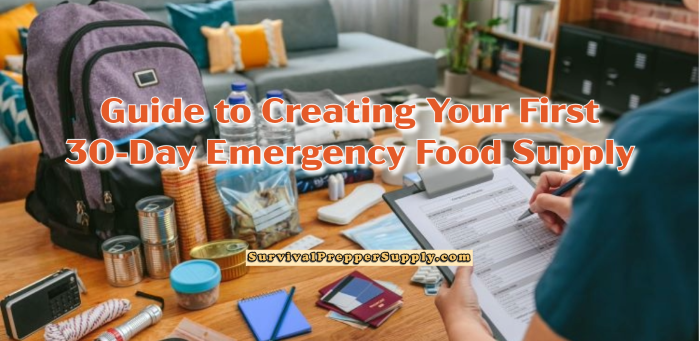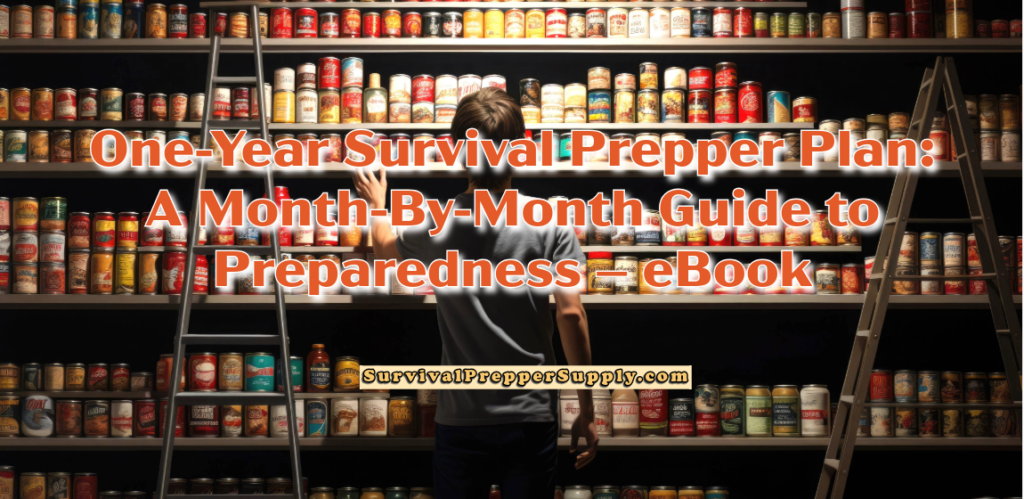Introduction to Solar Power for Survivalists
I’ve been drawn to the concept of self-sufficiency for as long as I can remember. With the evolution of technology, solar power has become an increasingly accessible pillar for survivalists like me. In this introduction, I want to outline the basic principles of solar energy and discuss why it’s becoming vital to survival planning. Whether you’ve been living off-grid for years or just starting to hone your survival skills, understanding the benefits of solar power is essential.
Solar energy, a clean and inexhaustible resource harnessed directly from the sun, could be the answer for those who aim to thrive in challenging situations. For survivalists, relying on traditional power grids is a vulnerability. Solar power, on the other hand, offers an autonomy that is hard to match with any other energy source. It’s about more than just keeping the lights on; it’s an investment in a lifestyle that prizes independence and preparedness.
Please note that this post contains affiliate links, meaning I will get a small commission for qualifying purchases at no extra cost to the buyer.
4,000W Solar Input | Made In America | 10-Year Warranty | Choose Bundle - Free Shipping & In Stock at ShopSolar.com
More powerful than 4 Bluetti AC300s, 15% more capacity than a Tesla Powerwall, and a staggering 50% of the cost, the Force 15K is, well, a force to be reckoned with!
This all-in-one power solution will close the gap in powering your entire house or off-grid dwelling without falling short.
In a breakthrough move for 2024, we present the FORCE 15K – the inaugural lithium iron phosphate power station by Mammoth RE that genuinely powers your entire home or off-grid property.
Enter the FORCE 15K – born out of your requests, submissions, and support calls. We've taken everything there is to love about power stations and obliterated the issues: limited capacity, restrained power output, and unnecessary complexity. Unlike other units that claim to power your entire house with one unit but fall short in reality, the FORCE 15K is here to close that gap.
With the world’s increasing uncertainty and the growing importance of environmental stewardship, incorporating renewable energy sources into survival strategies is a logical step. Solar power isn’t just an alternative anymore; it’s a wise choice for anyone looking to ensure long-term viability and resilience. In this transition to discussing the specific advantages of solar energy, remember that survivalism isn’t only about enduring the worst—it’s about planning for a sustainable future.
Advantages of Solar Energy in Survival Scenarios
As a survivalist, mastering self-sufficiency informs every decision I make. Solar power plays a pivotal role here. Harnessing the sun’s energy offers both a renewable energy source and autonomy from conventional power grids. Understanding these benefits helps prepare for any situation where traditional power sources may fail.
The sun provides an inexhaustible supply of energy each day. By tapping into this natural resource, we can generate electricity without depleting the earth’s raw materials. This means an unlimited power supply as long as the sun shines, perfect for long-term survival.
Independence from the grid is more than avoiding power outages; it’s about controlling your energy source. A solar setup enables you to produce and manage your own electricity, which is crucial when access to the outside world is limited or non-existent.
Moreover, solar power systems are known for their reliability and minimal maintenance. Solar panels and connected systems have no moving parts, drastically reducing the chances of breakdowns and the need for repairs. Those attributes are critical when support services are not an option.
In outdoor survival scenarios, discretion can be as important as the air we breathe. Solar panels operate silently, eliminating the noise pollution associated with generators. Whether avoiding attention from wildlife or maintaining a low profile for safety, silent power generation is an invaluable benefit.
Practical Applications of Solar Power for Survivalists
For survivalists, solar power isn’t just about being environmentally conscious; it’s a strategic move for ensuring long-term sustainability. The versatility of solar energy allows for multiple applications that can be tailored to survival needs. Let’s explore some practical ways solar power can be used in the wild or during an extended off-grid situation.
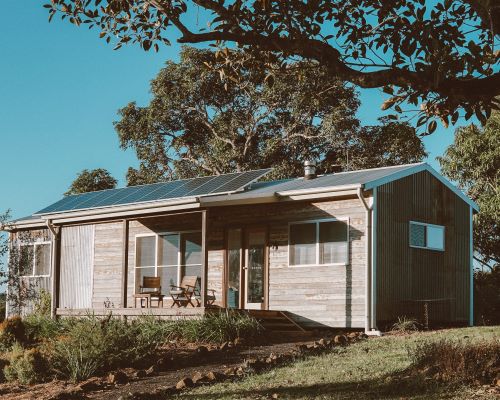
Home with solar panels installed on the roof.
Imagine you’re in a remote location, far from any municipal water supply. Solar-powered water purification systems can become your lifeline, using the sun’s rays to convert undrinkable water into a safe, potable resource. Not only does this reduce your reliance on carried supplies, but it also means you can stay hydrated without the risk of waterborne illnesses.
12K + [14.3kWh-15.23kWh Lithium Battery Bank] + 12 x 400W Mono Solar Panels | Includes Schematic [BPK-MAX]
Power all of life's essentials with our Backup Power Kits. Designed for running essential everyday power needs, these solar kits feature all-in-one hybrid inverters, enabling seamless operation on or off-grid. You can recharge your battery bank with grid or generator power, ensuring long-term uninterrupted energy supply.
A hassle-free, plug-and-play backup solar power solution.
Common Uses: Home backup power, mid-size on or off-grid applications, standalone power systems for homes, cabins, businesses, and even remote or mobile applications.
Communication is vital in survival situations; solar energy can help keep your devices operational. With portable solar chargers, you can ensure that radios, smartphones, and GPS device batteries stay charged, allowing you to reach out for help or receive critical information when needed.
Cooking food without a conventional heat source can be challenging. However, solar cookers efficiently harness the sun’s power to cook or pasteurize food and water. They’re silent, produce no smoke, and leave no scent trail, making them ideal for remaining undetected in a cautious environment.
And let’s not overlook the essentials: lighting and heating.
- Solar panels can power LED lights, making the nights more bearable and safe, especially when traditional power sources fail.
- They can also power small heaters, indispensable during cold nights in the wilderness or unwelcome power outages at home.
These applications are just the beginning. With creativity and the correct setup, solar energy can power various devices, contributing significantly to your self-sufficiency. Now, let’s move on and discuss what you need to consider when choosing and installing solar power solutions.
Considerations When Implementing Solar Solutions
If you’re considering harnessing solar power for survival, you should not jump in without a plan. A pragmatic approach is needed to ensure effectiveness and reliability.
- First, evaluate the amount of energy you might need during an emergency. This step is crucial as it dictates the size and number of solar panels and battery capacity to store the energy. Remember, overestimating your needs means carrying more gear, while underestimating could leave you vulnerable.
- Next, choosing the right equipment is not about picking the price but balancing cost, portability, and durability. Solar panels come in various forms, such as monocrystalline, polycrystalline, and thin-film, each with unique benefits and trade-offs.
- When you’re ready to install, optimum placement is critical. Panels should be exposed to maximum sunlight, free from obstacles like shadows or debris. Consider mounting options, too, as they can vary from static installations to portable setups that you can move with the sun.
- Lastly, nature can be unforgiving. Your solar setup must withstand diverse weather conditions, from blistering heat to icy cold. Additionally, consider seasonal variations in sunlight availability and plan your energy requirements accordingly.
USB C Fast Charging Portable Phone Charger with 4 Solar Panels & 3 USB Outputs for iPhone Tablet
- 25000mAh High Capacity: The solar power bank charges up 6-8 times for a cell phone and 2.5 times for a tablet, which is great for a week-long trip.
- Large Solar Panels: This solar charger comes with 4 high-performance solar panels that can reach 6W in direct sunlight to keep your phone up and running even in places without electricity.
- Fast Charging: With the upgraded 15W output, the portable solar charger can fast charge an iPhone to 50% in 30 minutes. One USB C port and dual USB A ports simultaneously charge three devices.
Success Stories: Real-Life Survivalists Utilizing Solar Power
I’ve observed how adopting solar power significantly impacts the daily lives of those committed to a survivalist lifestyle. The benefits go beyond having an energy source; it’s about self-reliance and sustainability. From my research and interactions, I’ve gathered several inspiring accounts of survivalists whose decision to integrate solar power into their plans dramatically increased their resilience.
- One such story comes from a family living off-grid in the mountains of Idaho. Their solar panels provide electricity for their home and workshop. They’ve set up a battery bank to store excess energy, ensuring they have power during the long winter nights. The family grows their food, and the solar energy system runs their greenhouse, providing warmth and light year-round.
- Another narrative features a survivalist in the Arizona desert. He engineered an ingenious water harvesting system, with solar power pumping the collected water for domestic use and irrigation. During the scorching summer, the solar setup powers an evaporative cooler, creating a more comfortable living environment.
These tales underscore solar power’s versatility but also reveal valuable lessons. Consistent maintenance of the panels ensures peak performance, while thorough knowledge of one’s environment allows for precise energy planning. Furthermore, these individuals underscore the importance of a well-planned system that accounts for seasonality and geographical challenges.
Solar power isn’t just a backup plan; it can become a way of life that ensures survivalists remain self-sufficient. These success stories serve as a testament to the power of the sun and the ingenuity of those who harness it.
3,600Wh / 3,600W Portable Power Station Setup Complete Solar Kit | 5-Year Warranty
The DELTA PRO is the most powerful solar generator EcoFlow has ever released! This home battery system is designed to offer users complete power security and off-grid independence, no matter where you are. It contains an enormous 3,600Wh deep-cycle battery.
It is expandable, seamlessly connecting to multiple 3,600Wh expansion batteries for a mind-boggling total battery capacity of 25kWh!
This means the DELTA PRO can almost double the power storage capabilities of a Tesla Powerwall 2! The DELTA PRO stores an incredible amount of power and has some of the most advanced features of any solar generator on the market today!
Integrating Solar Power into Your Survival Plan
If I’ve piqued your interest in solar power as a survivalist, you may wonder how to begin this journey. The initial step is relatively straightforward: evaluate your power consumption needs and determine how a solar setup can meet them. Begin with a small system, perhaps to power essential equipment, and as your comfort grows, so can your solar array.
Beyond installation, you must maintain and care for your solar power system.
- This means regularly cleaning solar panels,
- checking batteries and connections,
- and ensuring your setup is not compromised by new shading, such as tree growth or structures.
- Like any skill critical for survival, proficiency comes with practice and continuous learning.
Stay informed of the latest solar technology advancements. Efficiency and storage capacities are evolving rapidly, which might influence your decisions or upgrade plans. Keep abreast of new gadgets and solutions that could enhance your setup.
2,200W / 2,160Wh Portable Power Station + Choose Your Custom Bundle | Complete Solar Kit
Powers up to 8 devices simultaneously with a battery capacity of 2160Wh and an output power of 2200W. All round safety with industry-leading BMS and advanced smart screen.
Suited for Various Appliances
Jackery Explorer 2000 Pro powers all imaginable appliances, including hot plates, full-sized refrigerators, air conditioners, and more.
Superior Fast Solar and AC Recharging
It is fully recharged with 6 SolarSaga 200W solar panels in only 2.5 hours, 2 hours via an AC wall outlet, and recharged via a car port.
Up to 10 Years battery life
The Jackery Explorer 2000 Pro can last for up to 10 years (according to a frequency of using twice per week). It can be left on standby for over 365 days with 100% capacity, making it an extremely dependable emergency backup power supply.
Includes the Solar Generator Eclipse Kit - Eclipse Kits are solar generator kits paired with 1 x 200W folding solar panel. Eclipse Kits is top-rated for contractors, overlanders, glampers, and those looking for a lightweight, portable solar kit.
Eclipse Kits include a 12V car charger (cigarette lighter) for charging on the go, along with all cables, connectors, parts, and pieces needed to get up and running. Plus, a high-quality, budget-friendly portable solar panel.
One last piece of advice: TEST YOUR SYSTEM REGULARLY. Ensure everything works correctly under various conditions and make adjustments as needed. Solar power offers incredible benefits for survivalists, but like any tool, it’s only as good as your ability to use it effectively.
The shift to using solar energy requires commitment and a degree of technical understanding, but the peace of mind and independence it grants are invaluable for any survivalist. Harnessing the sun’s power ensures a sustainable and resilient energy supply that won’t disappoint when you need it most.
Have you explored the use of solar power? What devices have you implemented? Share your experiences by commenting below to help others understand the benefits and challenges of using solar energy.
I’m the daughter of 2 original survivalists who moved from the north to sunny Florida. My mother, along with her parents, bought 30 mostly uncleared acres in 1938. The first home was made of pecky-cypress and built by a house-raising. My mother raised 10,000 chickens.
My divorced mother met and married my father in 1948. From pine trees on our property, he hand-built a log cabin. He also built a tarpaper-lined 65’x45′ pool with duck pond overflow. We had an artesian well for our water and powering our hand-built waterwheel for the pool. He built a substantial cantilevered roof workshop with a car pit in the massive cement floor.
Since my early teens, I have read a ton of books about survival, prepping, the bomb, an apocalypse, homestead living, and SHTF situations. As an adult, I continue to read sci-fi, survival prepping, and science. I practice a prepper lifestyle albeit a bit modified, read a lot, buy a lot, pack/store a lot of anything survival related.
Read my About Me post for more details on our self-sufficient living. I lived there until I went to college in 1968.
My SurvivalPrepperSupply.com blog strives to educate individuals on coping with natural and human-caused disasters using article posts about preparing for emergencies.
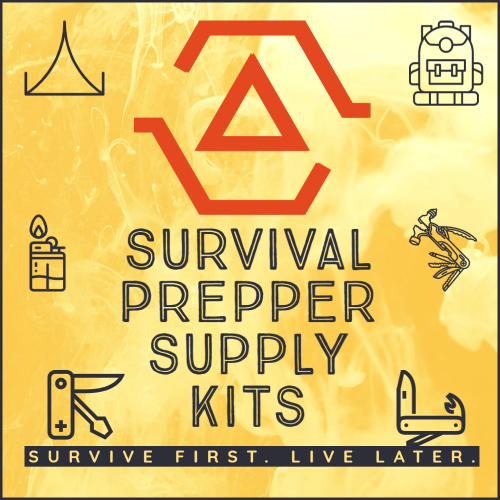
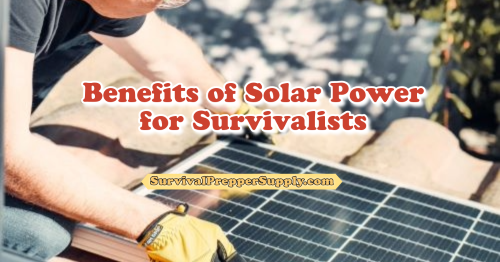
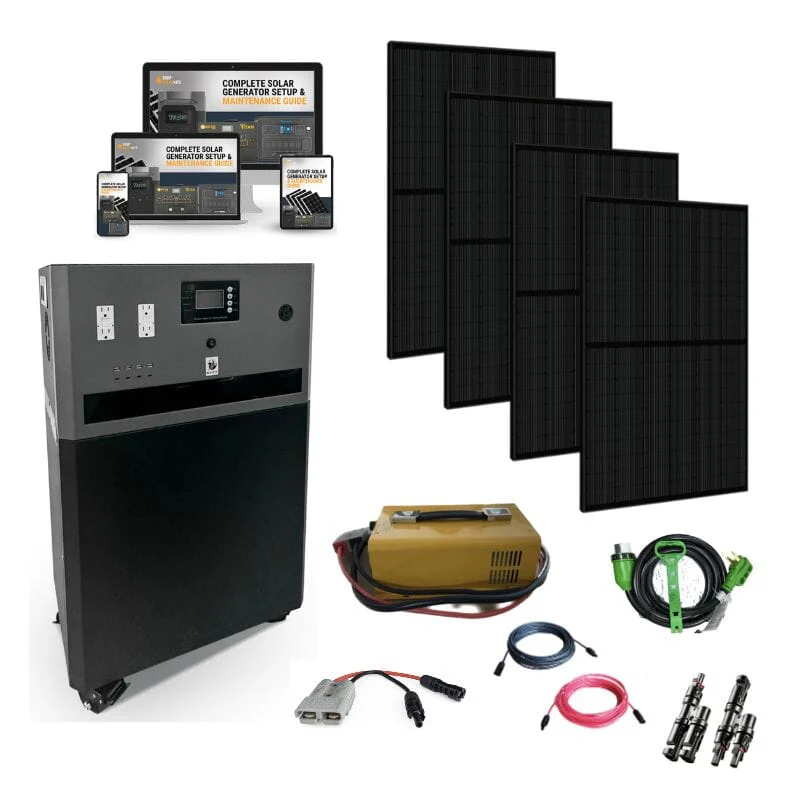

![4.8kW Complete Solar Power System - Sol-Ark | Backup Power Solar Kit [BPK-MAX] - ShopSolar.com](https://survivalpreppersupply.com/wp-content/uploads/2023/12/500SOLARK-BPKMAXSERVERRACK_800x800-jpg.webp)

